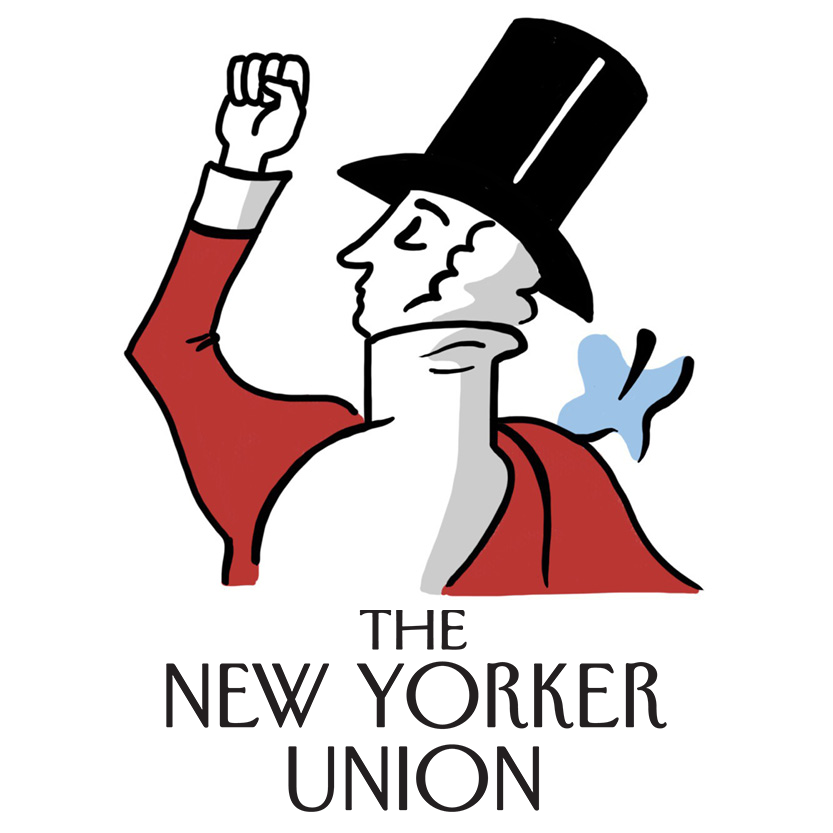Brief highlights of our Contract 2 wins:
A general wage increase (G.W.I.) of 3% upon ratification; 3% on April 1, 2025; 3% on April 1, 2026; and the greater of 3% or what Condé United negotiates on April 1, 2027—compounded, a guaranteed 12.55% over the life of the contract (more than double management’s initial offer)
A $1,000 bonus for all full-time members who have been with the company since June 1, 2024 (and $500 for part-time members)
An additional $1,000 bonus for members whose salaries are under $65,000 after the application of the ratification G.W.I.
A $63,000 salary floor, effective upon ratification, which will increase to $64,500 on April 1, 2026
Increased salary minimums for all titles
Sustained protections around outside work and comp time—rights which the company sought to severely restrict
Effective January 1, 2025, 14 weeks of paid parental leave (up from 10 in our first contract), and 3 weeks of paid leave for foster parents
Accelerated accrual rates that will allow members access to expanded vacation time and to guaranteed unpaid creative leave earlier in their tenure at TNY
A longer notice period (or more notice pay) in advance of any reductions in force, along with sustained seniority-based protections
As part of our first contract campaign, in September 2020 The New Yorker Union conducted and released a comprehensive pay study to assess our members’ needs, and the needs of our workplace.
Read the executive summary below:
-
Executive Summary
The New Yorker Union began negotiating our first collective bargaining agreement in November, 2018. In advance of presenting wage proposals to New Yorker and Condé Nast management, the union conducted a pay study based on a census of salary, employment, and self-reported demographic data provided to the union by Condé Nast on September 23, 2020. The study is best understood as a snapshot of our bargaining unit at a moment in time; it contemplates only full-time employees, it does not include historical data, and some variables have changed since the data set was compiled. The full report was shared internally with management and with staff; a summary of our findings follows. As of September, 2020:
Recent efforts to hire more diversely are evident, but to become an inclusive workplace, The New Yorker must offer more opportunities for employees to advance professionally and financially.
Of bargaining-unit members who chose to identify their race, fifty-six per cent are white, sixteen per cent Asian, eleven per cent Black, seven per cent Latino, and seven per cent people of two or more races.
Almost two-thirds of bargaining-unit members are women; almost two-thirds of those women are white.
Roughly eighty per cent of bargaining-unit members are younger than forty; there is much greater racial diversity among employees under thirty than in any other age group.
The median tenure of bargaining-unit members is two years; among male bargaining-unit members, the median tenure is four years, and among white male bargaining-unit members—who make up only fifteen per cent of the unit—the median tenure is five years.
With a median salary of $64,000, unionized employees of The New Yorker, as a whole, are underpaid for our industry and marketplace. (According to the M.I.T. Living Wage Calculator, the typical 2020 N.Y.C.-area media worker earns $67,271 annually.)
There is a gender pay gap that especially affects women of color.
Male bargaining-unit members’ median salary falls above the shop median; female bargaining-unit members’ median salary falls below.
The discrepancy between men’s and women’s median pay is $4,000; among employees of color, the gap between men’s and women’s median pay is closer to $7,000.
Women of color earn a lower median salary than white women; the pay gap affecting women of color is widest among employees whose salaries fall below the shop median.
Several departments where unit members are employed to work primarily on either the print magazine or the Web site show a pay gap across platforms.*
The nature of the print-Web pay gap is inconsistent from department to department, but usually favors print-side employees.
In departments where the print-Web pay gap tends to favor print-side employees—fact-checking, art/photo, and copy—Web employees are more racially diverse than their colleagues on the print side.
* The hiring of Web-dedicated employees is a relatively recent development; some print employees have worked at The New Yorker longer than the digital product has existed.
Many employees suffer a “loyalty penalty,” or long-term wage stagnation.
Despite a median tenure of four years—twice the shop median—editing assistants are, as a group, the most poorly compensated members of our unit, with a median salary of $42,000.
Despite a median tenure of twenty years, proofreaders, in the copy department, have a median salary of $57,000.
The New Yorker Union proposes to:
Raise the salary floor.
Instate a system of regular wage increases.
Establish salary minimums tied to job classification.
Regulate pay, integrate workflows, and cross-train/cross-promote employees across platforms.
The New Yorker Union urges the company to commit to its workers by investing in them financially. Increasing wages, improving transparency around compensation, regulating salary structures, and opening equitable avenues to advancement will allow The New Yorker to sustain a diverse workforce that is dedicated to the publication’s mission and standards, and will allow the people who make The New Yorker to support themselves and their families while continuing to learn, grow, and produce work of the highest quality. We demand a fair contract—and that means fair pay.
